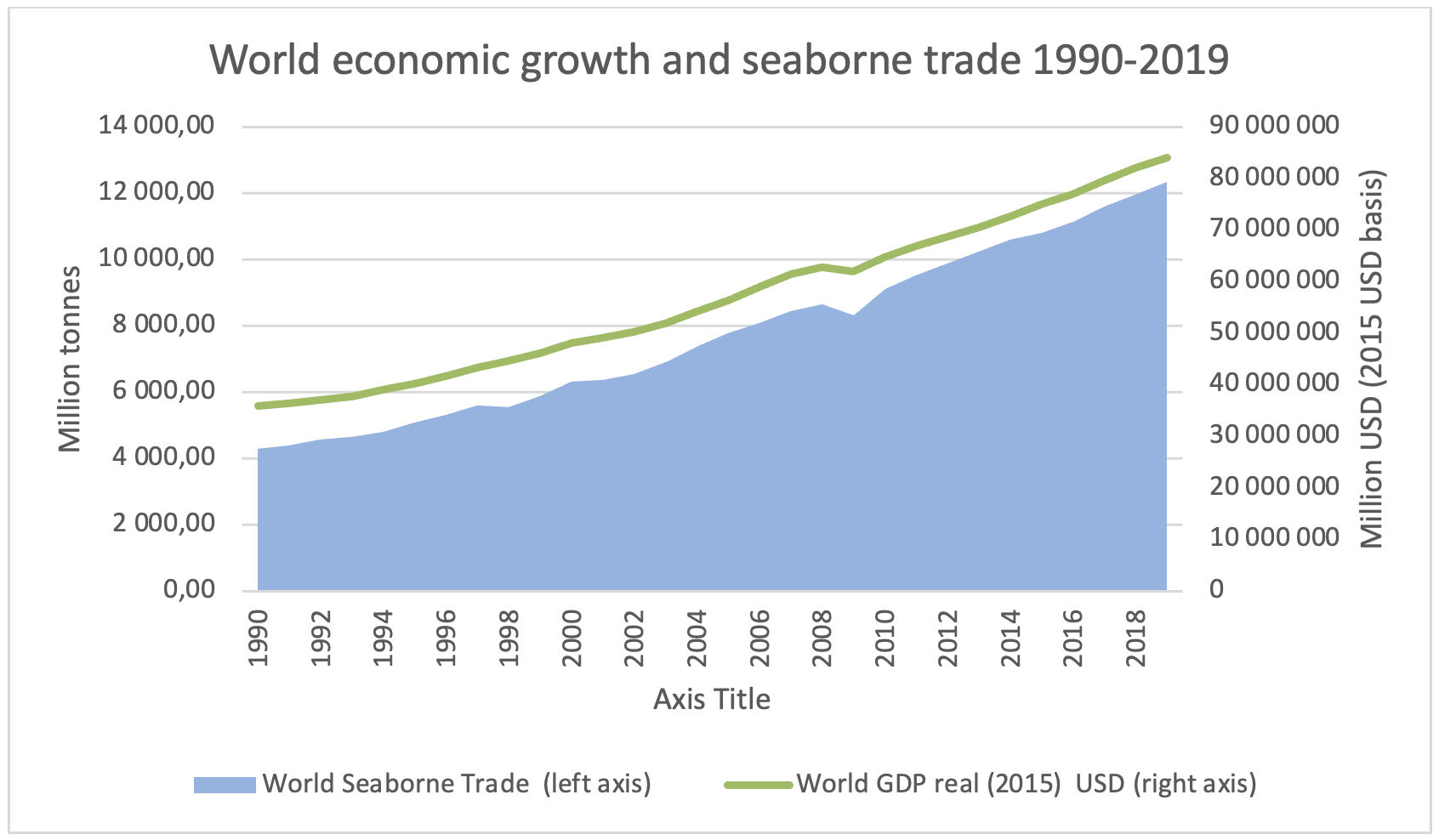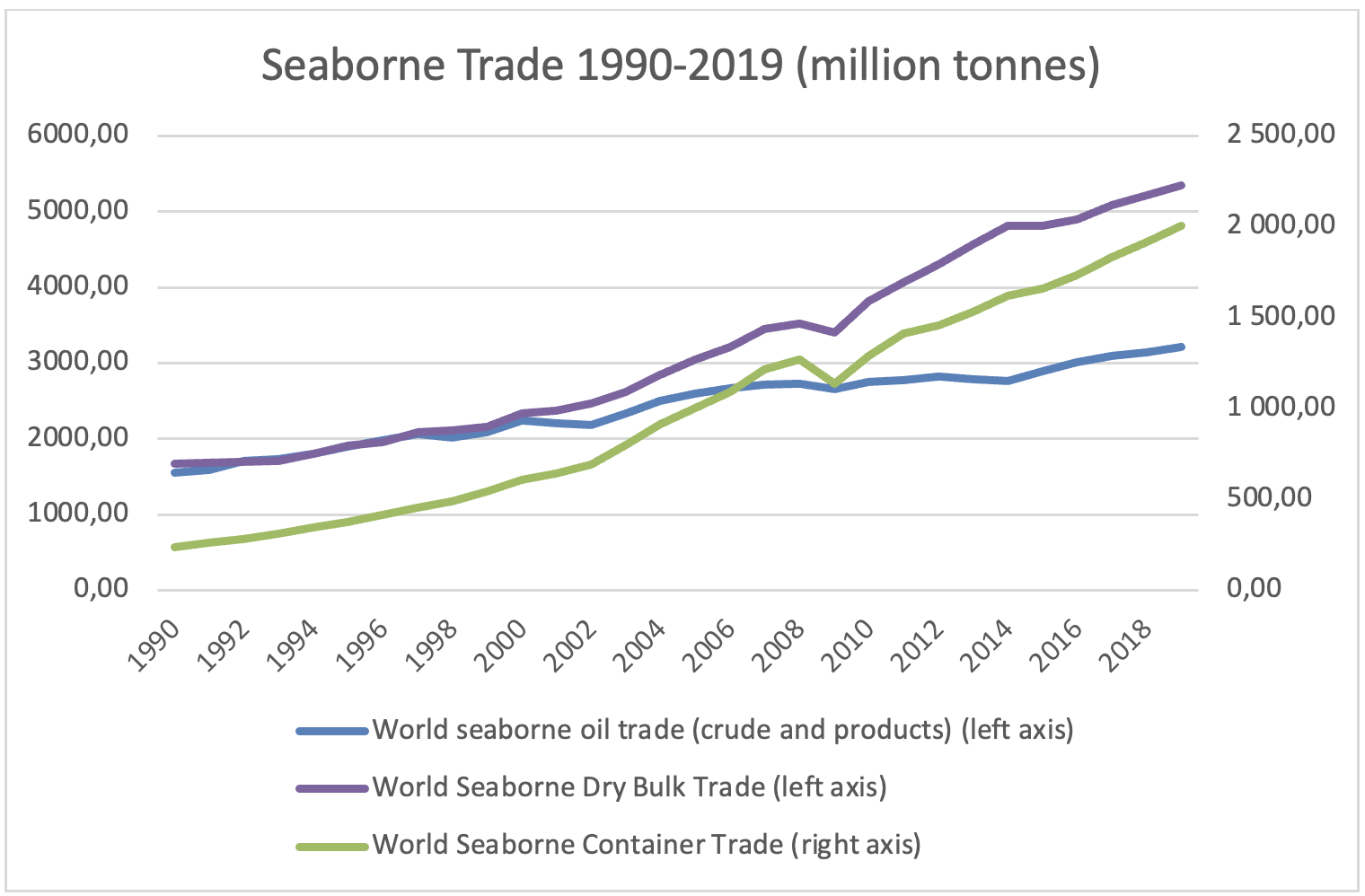B.1.2 Passenger shipping
- Details
EILIF DAHL, SIRI STRANDENES, BOB BRIDGER MARAGARETHA HOLTENSDOTTER LÜTZHÖFT
Whereas shipping dominates world international cargo transport, passenger transport has met strong competition from air travel. As a result, the traditional intercontinental passenger liners thus have largely disappeared. Current passenger shipping segments include:
- cruise vessels
- regional and coastal ferries
- high speed passenger craft
Cruise vessels
EILIF DAHL, SIRI STRANDENES
Before World War II (WWII) the fastest transatlantic transport of people and mail was a matter of national pride (1). Prior to the advent of airliners, ocean liners were the primary mode of intercontinental travel and in the off-season some liners would do leisure cruises to a variety of ports. However, by the mid-1960s more people were crossing the Atlantic by airplane than by ship and passenger overcapacity caused many luxury liners to be converted to full-time cruise ships, offering pleasure and adventure trips only.
By the end of the 1960s ships were built exclusively for cruising, starting the boom that turned cruising into mass tourism. In 2019, several hundred ships with multinational officers and crew cruised to more than 500 destinations all over the world, and in 2019 they carried 29.7 million passengers - 15.4 million from America and 7.7 million from Europe (2). The largest market is still the Caribbean with 34,2% of the capacity and the Mediterranean is second with 17,3% (2).
Cruise ships target different traveller groups and vary in size – from exploration ships with up to a few hundred adventure-seeking persons on board to mass tourism megaships with more than 8000 persons, including 2500 crewmembers.
While ports have been competing hard for cruise visits, many popular but small destinations, like Venice and the Geiranger fjord, both environmentalists and locals consider such ports overwhelmed in peak season. Passengers may leave more than their footprints but not enough money.
Ferries
SIRI STRANDENES
Ferries range from small passenger ferries crossing rivers and fiords to big Ro-Ro (Roll-on Roll-off) ferries. The smaller ferries operate, for example on the Hudson River in New York, in Hong Kong harbour and in Norwegian fjords. The bigger Ro-Ro ferries with a capacity to carry 3000 passengers and 650 cars cross the English Channel. North Sea ferries and the Hurtigruten (3) resemble cruise vessels. They carry fewer cars/lorries but have capacities for up to 2000 passengers. In later years, Color Line (4), a major operator back and forth from Norway to Denmark and Germany, has invested in vessels with capacities in passengers and cars similar to the channel ferries. In 2019, Color Line carried more than 3,8 million passengers, 961,000 private cars and almost 180,000 freight units (5). The ocean liners, although mostly of the past, were also called transatlantic ferries. Hence, the differences between passenger ships, liners, cruise ships and ferries are sometimes indistinct.
High-speed passenger craft
SUE STANNARD
High-speed craft (HSC) operate in many of the world’s busiest shipping lanes and travel nationally between islands or internationally. Most serve as passenger ferries but the largest also carry cars and larger vehicles. They include, among others, air-cushion vehicles (such as hovercraft) and hydrofoil boats. Many new types of HSC were developed in the 1980s and 1990s and the International Maritime Organisation adopted new international regulations dealing with the special needs of this type of vessel (6). This requires that all passengers are provided with a seat and that no enclosed sleeping berths are provided for passengers.
Super yachts
SPIKE BRIGGS
A superyacht is a large and luxurious pleasure vessel. There are no official or agreed definitions for such yachts, but this term is regularly used to describe professionally crewed motor or sailing yachts, ranging from 24 metres (79ft) to more than 180 metres (590ft) in length. Number of crew range from below 10 to over 60.
Superyachts are often available for charter with staff that cater for guests at a high standard of comfort. They may be designed to emphasize comfort, speed, or expedition capability. Depending on the season, superyachts may be most frequently found in the Mediterranean and the Caribbean, but also increasingly across the Pacific and high latitudes. Many are available for charter at prices that exceed €250,000 per week. Larger yachts may have more than one swimming pool, they may carry a variety of water toys, other tenders and even submarines, and some carry a helicopter.
Crewing on passenger vessels
BOB BIRDGER, MARGARETHA HOLTENSDOTTER LÜTZHÖFT
Passenger vessels differ in their crewing from other merchant vessels. In addition to the required deck and engine crew present on all vessels, they also carry a variable number of passenger service staff. The number of seafarers employed and the roles they fulfil vary hugely depending upon the route, length of time at sea, number of passengers and type of vessel. Roles may include
- Restaurant and bar staff - waiters, wine waiters, Maitre D’.
- Reception staff – front desk, tours staff, managers
- Shop staff – including canteen staff and specialist staff for high end goods on cruise ships
- Spa staff – hair dressers, beauticians, massage therapists
- Medical staff – doctors, nurses or other health care professionals
- Entertainment staff
In addition, the increased numbers in persons on board and the facilities available mean that there is the need for an increased number of staff such as cooks, kitchen assistants, waste disposal staff, pool staff etc.
Unlike seafarers in the deck and engine departments, these seafarers tend not to be ‘career seafarers’ but rather have a career ashore that they wish to pursue on board a ship for a variable length of time. They are not covered by the STCW requirements for eyesight etc. that apply to deck and engine staff and in many countries are not required to complete any safety training before going to sea. In others, they are required to complete a Personal Survival course. All of these factors can lead to a difference in their approach to life at sea, the risks involved and the environment in which they are living and working.
Medical care in passenger shipping (Dahl)
From a medical perspective, there are distinct differences between ocean liners, cruise ships and ferries. Traditionally, intercontinental liners had to have a doctor aboard if the ship carried 13 or more passengers. They carried many people in what was frequently rough weather for many days without evacuation possibilities (1). Most had rather well equipped infirmaries and emergency surgery was not unusual at sea.
These days most shipping companies follow the Maritime Labour Convention 2006 (MLC 2006) (7) which states that ships carrying 100 or more persons and ordinarily engaged on international voyages of more than three days duration shall carry a qualified medical doctor who is responsible for providing medical care. MLC 2006 does not specify details regarding the ship’s infirmary, medication, medical equipment or qualifications of the ships´ medical staff, but most cruise companies will – not least of all for legal reasons – follow or exceed “The Health Care Guidelines for Cruise Ship Medical Facilities” by the American College of Emergency Physicians (ACEP)(8). These guidelines were initiated by American emergency physicians who had worked part-time as ship´s doctors and were frustrated by the lack of proper medical facilities and equipment aboard. They felt that emergency physicians rather than surgeons were needed at sea. Therefore, the focus of the ACEP Guidelines was on emergency medicine while only minor surgery skills were considered necessary. The guidelines have been regularly revised since 1995 and are actively promoted by the world´s most influential cruise trade organization, Cruise Lines International Association (CLIA) (2).
Most ferries do not engage in international trade of more than three days, thus a seafarer who has “satisfactorily completed training in medical first aid” provides medical care (7). Even international ferries with more than 2000 persons aboard and spending 20 hours at sea between Norway and Germany do not carry a ship´s doctor, but do have a paramedic on duty (9). As ferry traffic increases and passenger expectations keep rising due to the continuous improvement of care on cruise ships, ferry companies may have to consider employing medical staff also on smaller ferries doing shorter trips.
More information on passenger health and cruise ship medicine can be found in Chapter 2.12 and 2.13
- Maxtone-Graham J. The only way to cross. Collier Books, New York 1972.
- https://cruising.org/-/media/research-updates/research/global-cruise-impact-analysis---2019-final.ashx Accessed May 2021
- http://www.hurtigruten.no/ Accessed May 2021
- colorline.no/ Accessed May 2021
- https://www.colorline.no/polopoly_fs/7.134280.1616613882!/CG-CA21-01%20A%CC%8Arsrapport_2020_EN_spread.pdf Accessed May 2021
- International code of safety for high-speed craft (HSC Code) : (un.org) Accessed May 2021
- International Labour Conference. Maritime Labour Convention, 2006. https://www.ilo.org/global/standards/maritime-labour-convention/text/WCMS_763684/lang--en/index.htm Accessed May 2021
- American College of Emergency Physicians. Cruise Ship Medicine Section. Health Care Guidelines for Cruise Ship Medical Facilities. https://www.acep.org/patient-care/policy-statements/health-care-guidelines-for-cruise-ship-medical-facilities/#sm.00001oz1nz0cjff0owcs23qt8vjno Accessed May 2021
- Holt T-E, Tveten A, Dahl E. Medical emergencies on large passenger ships without doctors: the Oslo-Kiel-Oslo ferry experience. Int Marit Health 2017; 68, 3:153-158.

